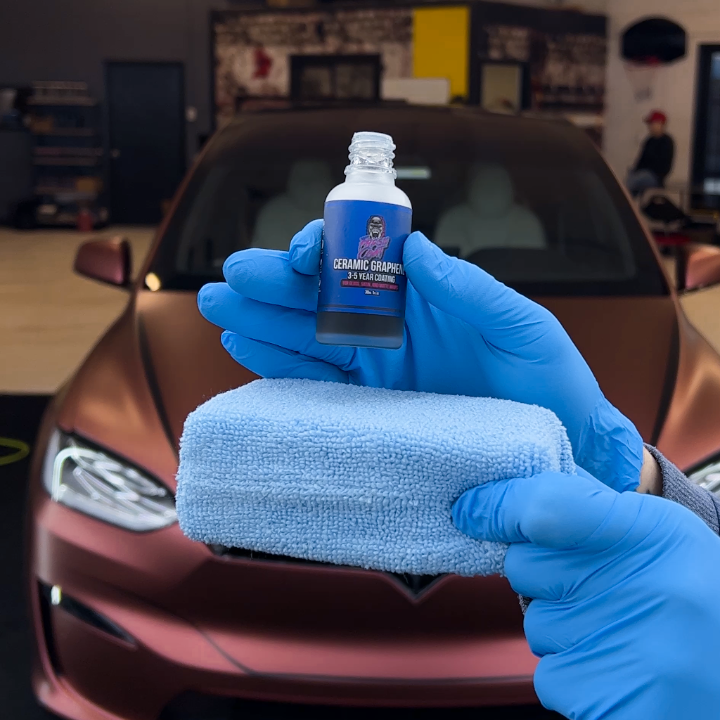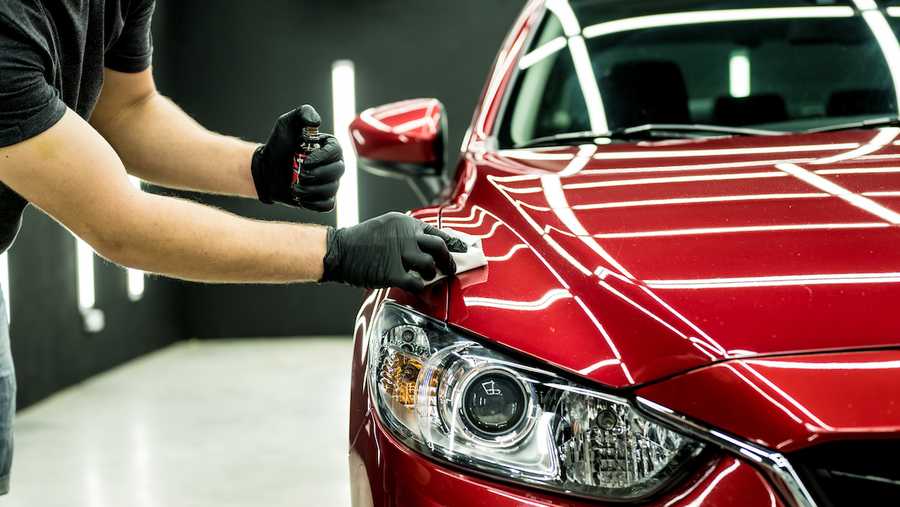The Power of Ceramic Pro: Remarkable Finish for Ultimate Lorry Care
The Power of Ceramic Pro: Remarkable Finish for Ultimate Lorry Care
Blog Article
The Science Behind Ceramic Finish: How It Boosts Your Lorry's Visual and Toughness

Comprehending Ceramic Finishing Chemistry
The chemical structure of ceramic coverings plays an important duty in identifying their sturdiness and protective residential properties on lorry surface areas. Ceramic finishings are usually composed of silicon dioxide (SiO2), which is a main element giving firmness and heat resistance. Various other ingredients such as titanium dioxide, silicon carbide, and polysilazanes are typically contributed to enhance specific residential properties like UV bond, resistance, and hydrophobicity.
Silicon dioxide, likewise referred to as silica, creates a transparent and strong layer on the vehicle surface when applied correctly. This layer acts as a shield, securing the paint from ecological pollutants, UV rays, oxidation, and chemical spots. Titanium dioxide assists in blocking unsafe UV rays that can trigger paint fading and wear and tear. Silicon carbide is understood for its abrasion resistance, making the ceramic coating difficult and sturdy against physical damage. Polysilazanes are used to boost the covering's adaptability and attachment to the vehicle's surface area, making certain lasting security. Comprehending the chemistry behind ceramic coatings is crucial for both applicators and car proprietors to value the value and advantages these finishings offer in preserving the visual charm and longevity of vehicles.
Boosted Gloss and Mirror-like Complete
Comprehending the chemical structure of ceramic layers not only discloses their protective residential or commercial properties yet likewise loses light on just how they contribute to attaining an enhanced gloss and mirror-like coating on vehicle surface areas - ceramic pro. Furthermore, the chemical framework of ceramic finishings allows them to form a strong bond with the car's paintwork, protecting against oxidation and preserving the clarity of the surface over time. The mix of loading buildings, light reflection, and resilient security makes ceramic layers a popular option for those seeking a mirror-like and vivid finish for their cars.

Effect On Paint Security and Long Life
Ceramic coverings for lorries significantly improve the longevity and security of the paintwork. By developing a chemically immune layer on top of the vehicle's clear layer, ceramic finishings act as an obstacle against numerous ecological pollutants that can harm the paint gradually. These coatings are developed to repel dirt, water, road salt, bird droppings, and other dangerous materials, reducing the risk of paint oxidation and rust. In addition, the firmness of ceramic coatings gives a level of scrape resistance, helping to keep the lorry's look for an extended period.
In regards to longevity, ceramic layers provide a resilient remedy moved here compared to typical waxes or sealants. While waxes may last a couple of weeks to a couple of months, ceramic coverings can in 2015 with correct maintenance. This extended life-span not only lowers the regularity of reapplications yet additionally saves effort and time over time. In general, the protective buildings of ceramic layers contribute considerably to protecting the automobile's paintwork and improving its aesthetic charm over a prolonged duration.
Resistance to Impurities and Extreme Elements
With the safety guard offered by ceramic finishes against various environmental impurities and components, lorries are able to preserve their immaculate look despite direct exposure to extreme problems. Ceramic finishes create a solid barrier that pushes back water, dirt, dust, and other usual pollutants, avoiding them from bonding to the vehicle's surface. This hydrophobic nature not only makes cleansing easier yet additionally lowers the risk of water spots and etching triggered by acidic contaminants. Furthermore, the chemical resistance of ceramic coverings aids shield the paint from bird droppings, bug splatter, tree sap, and other destructive substances that can harm the finish over time.
In addition, ceramic coatings supply UV protection, protecting the vehicle's paint from the sunlight's dangerous rays that can create fading and oxidation. This resistance to UV damages assists preserve the this page color strength and sparkle of the paint for longer durations. By developing a resilient and durable barrier, ceramic coverings make certain that the lorry's outside remains secured against a large range of contaminants and severe components, preserving its visual charm and durability.
Application Techniques and Upkeep Tips
For optimal outcomes when applying ceramic more info here layers to lorries, using proper techniques and sticking to suggested upkeep techniques are crucial. Before using the ceramic layer, it is crucial to completely tidy and decontaminate the vehicle's surface area to make certain appropriate adhesion.
When applying the ceramic layer, it is advised to operate in tiny areas to make sure also protection and to avoid the product from drying out also promptly. Utilizing applicator pads or microfiber cloths, apply the finishing in a crisscross or up-and-down motion, depending upon the item's guidelines. After the covering is applied, permit it to heal for the specified time prior to buffing off any kind of residue.
In terms of upkeep, routine washing with pH-neutral soaps and staying clear of unpleasant tools or severe chemicals will certainly aid maintain the ceramic finishing's stability. Regular examinations for any damage or endure the finish can likewise assist preserve its safety properties gradually.

Verdict
To conclude, ceramic finish boosts a lorry's aesthetic charm and durability with its chemical make-up, supplying a glossy coating and protecting the paint from environmental contaminants. Its resistance to harsh components and convenience of maintenance make it a popular option for cars and truck owners looking to protect the appearance of their cars. Overall, ceramic covering is a clinically backed option for preserving the appearance and longevity of your lorry.
Comprehending the chemistry behind ceramic coatings is vital for both applicators and car owners to value the worth and advantages these coatings provide in maintaining the visual appeal and durability of vehicles. (ceramic pro)
Comprehending the chemical structure of ceramic layers not just exposes their safety residential properties but additionally drops light on just how they contribute to attaining an improved gloss and mirror-like surface on lorry surfaces. By developing a chemically resistant layer on top of the lorry's clear layer, ceramic coatings act as an obstacle versus various ecological contaminants that can harm the paint over time. Generally, the protective residential or commercial properties of ceramic finishes add substantially to maintaining the automobile's paintwork and enhancing its visual charm over an extended period.
In final thought, ceramic finish improves a vehicle's visual appeal and durability via its chemical composition, supplying a shiny surface and shielding the paint from ecological contaminants.
Report this page